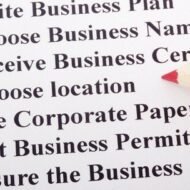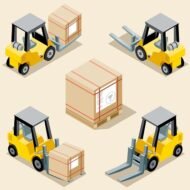Posted by Managementguru in Business Management, Project Management, Startups
on Mar 5th, 2014 | 0 comments

Small Business Startup Checklist Establishment of a small business and successfully running it is definitely by no means a small achievement. It is a commendable achievement as entrepreneurs are the backbones of a country’s economy and its growth. Proper planning and understanding the significance of critical factors and determinants affecting a small business paves way for the smooth functioning of your enterprise. What are the prerequisites for running a small business? Any plan or idea to be transformed into a product or a service needs to be categorically put into experimentation and subject to inquiries. Prepare a detailed project report With the help of an external expert consultant get it appraised Let the product be innovative which has hitherto not hit the market, for instance flying cars Plan your geographical area of operations Go for a detailed market survey through questionnaires and giving out free samples Try to gauge the pulse of your target customers Launch your product at the right time Plan your marketing strategy regarding price and promotions Fix up proper capitalization that would meet your financial requirements. Definitely you have to bring in initial working capital of your own and don’t rely solely on bankers for the entire funding. Asset management, fixed capital and working capital management must be absolutely preplanned. Man power requirements -Right person for the right job and the appropriate number of persons needed to complete a job has to be planned. Their recruitment, selection, training and development forms part of the package. Location and Layout Most important criterion is the location and layout of your manufacturing facility. It should facilitate easy movement of materials to bring the product out to the market in the shortest possible time. Avoid bottlenecks or try to resolve them for smooth production. As we all know technology feeds on itself and more the delay, more competitors and better products throng the market. Keep in mind the end product should always reach the buyer or the consumer at the right time. Plan your re order level, delivery schedule and lead times in accordance with the orders in hand. Picture Courtesy : Yourcityenterprise.com Production Inputs Smooth supply of production inputs, uninterrupted supply of power, copious water supply, the nature of the soil( if your product is agro based), proximity to the market and transportation facilities have to be given due importance. Your product has to be compliant in such a way that it should not pollute the environment. So a proper waste disposal management system should be designed right at the start of your operations. Book-Keeping Proper book keeping and maintaining your accounts will please the tax authorities by which you create goodwill for your company and also keep your credit management under controllable limits. Any product centered around the consumer will be a hit and that is “marketing”. If you plan your success formula from your product that is “selling” that might not always be successful. Your distribution channels should be continuous with unbroken links and strong. The kind of self confidence that you exuberate makes you a reliable person and in the long run you become iconic. Technology Updates Businessmen have trained the customers to expect something new everyday, because such is the power of technology and the competitor force. So it is better to keep yourself updated with the latest technology available in the market. Take your product to your customers in a convincing manner by which it proves to be a win-win situation for both sides; profit making and customer satisfaction for the entrepreneur and buying products the money’s worth and the real benefits of the product for the...

Posted by Managementguru in Operations Management, Project Management
on Feb 24th, 2014 | 0 comments

Materials Handling Minimize Movement and Maximize Productivity Manufacturing organizations handle many types of materials in their production environment. Raw materials, materials-in-progress, finished goods, accessories, components, packaging materials, maintenance and repair supplies, scrap and many more must be handled in an efficient manner to make the operations cost-effective and to avoid wastage. The principle behind material handling process is said to be “no handling”, which is not practicable in reality. So it would be appropriate to say, that the objective of materials handling would be, to reduce the number of handlings as well as reducing the distances through which the materials are handled. Why efficient materials handling is inevitable in a manufacturing set-up? The movement of materials from the receiving area to the shipping area through the production line does not add value to the product but only to the cost. Further, plant layout and materials handling are complementary to each other. A production facility must incorporate a good plant layout that enhances the efficiency of movement of materials with ease and should deliver maximum productivity. Principles for Efficient Materials Handling There are certain principles that serve as a guide for efficient materials handling. These provide a framework for selecting specific materials handling equipments that form the core of the production system. Eliminate handling-If not, reduce the distance travelled by the materials Keep moving-If not, reduce the time spent at crucial points Simple patterns of material flow is appreciated-If not, reduce back tracking, cross overs, congestion Carry pay loads Carry full loads Use reliable and inexpensive source of power Materials handling should be considered in the light of movement of men, machines, tools and information. It also depends on the type of product manufactured, quantity, value and size of the organization. Cost effectiveness can be achieved if the firm is able to reduce the manufacturing cycle time through faster movement of materials and thus work-in-progress inventory costs can also be controlled and reduced. Design of the plant layout that facilitates sequential flow of materials through the production facility, improved working conditions, safety in the movement of materials, contribution to better quality by avoiding damage to the materials due to inefficient handling and workers being appraised about the importance of smooth materials handling result in higher productivity at lower manufacturing cost. Interested in being served food by Robots! Factors to considered while deciding on material handling equipments: Adaptability, flexibility, load capacity, power, speed, nature of supervision required, space requirements, ease of maintenance, environment friendliness and cost are some of the factors to be taken into consideration while deciding on the type of material handling equipments. Also the capabilities of manpower to operate the equipment and safety of personnel cannot be overlooked. It is important to select and design, materials handling system that are expensive to purchase and operate. For instance, if overhead cranes are to be used, the structure of the building should be strong enough to support the installation. Spacious aisles are mandatory if the loads are heavy and transported across the shop floors. Equipments used: Elevators, hoists, industrial trucks like fork-lift trucks, pallet trucks, pipelines, automatic transfer devices, automated guided vehicles, and industrial robots are some of the handling equipments that have found their ideal place in this process. Materials handling activity should be evaluated like any other activity to gauge its effectiveness. The focus should be on the manufacturing cycle efficiency, equipment utilization, percentage of time lost, total number of moves and material handling costs as percentage of manufacturing...




